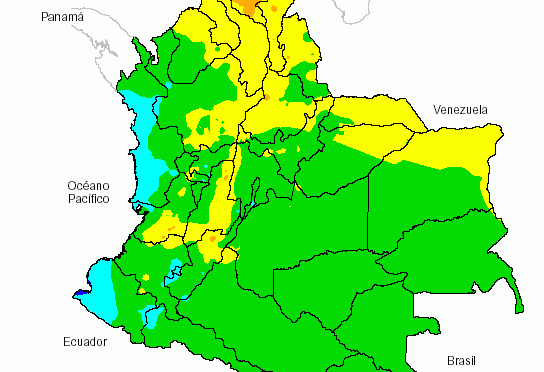Colombia is building a greener energy future with the expansion of photovoltaics. Although it already has 80 photovoltaics in operation, they expect this number to increase.
The push towards a more sustainable energy transition continues to gain strength in Colombia, so in the midst of the inauguration of the Palmaseca photovoltaic plant (Valle del Cauca), the Minister of Mines and Energy, Andrés Camacho, revealed that the country is on track to have more than 100 photovoltaics in operation before the end of 2024. This announcement, although not the first in relation to the Government’s clean energy policy, draws attention as it is an ambitious goal of reaching six gigawatts of renewable energy in the country’s energy matrix. During his speech, the minister highlighted not only the magnitude of the project, but also the stories behind each solar park: “Each of the projects has a story, and (…) before the end of the year we will have 100 of these stories, 100 solar parks in the country, which will lead us to meet a goal that we have set for ourselves.”
Colombia already has more than 80 solar projects in operation, capable of generating approximately 1,600 megawatts of energy; however, only six of these parks exceed a capacity of 50 megawatts. Among the most notable are the La Unión Solar Park, which can supply 100 megawatts, and Tepuy, both of which contribute significantly to the country’s installed renewable energy capacity.
With the announcement of the 100 solar parks, this number is projected to continue to grow, aligning with the goal of the President of the Republic, Gustavo Petro, who since his inauguration in August 2024 has emphasized the need to invest in the ecosystem, clean energy and the mitigation of environmental impacts. This energy strategy not only focuses on the development of renewable energy infrastructure, but also on its contribution to the revitalization of local economies, the creation of jobs and the strengthening of communities.
A clear example of this multidimensional approach is the development of the solar park in the department of Cesar. This project, in particular, generated more than 1,700 jobs, of which 75% were occupied by residents of the department, while 62% of the jobs were concentrated in the communities of Potrerillo and La Loma. In addition, training programs have been implemented that have benefited more than 2,500 people, who now have skills in areas such as beekeeping, community strengthening and quality education.
The principal of the Potrerillo Educational Institution, in this context, highlighted the relevance of the project not only for its energy contribution, but for the social impact it has generated: “This project has been more than a project, since it has generated employment and has allowed us to highlight the importance of the women of this community,” according to the national government.
The development of these solar parks is also part of a larger strategy of the national government, which seeks to diversify the energy matrix of Colombia. The goal is to reduce dependence on fossil fuels and increase the participation of non-conventional renewable energies, such as solar and wind, in the country’s energy production. To do so, public and private investment will be crucial, along with a regulatory point that facilitates the implementation of sustainable projects.
With the projection of reaching six gigawatts of renewable energy by the end of the current government administration, Colombia is positioned as one of the leading countries in the energy transition in Latin America. This not only responds to the internal needs of the country, but also to the international commitments acquired in the fight against climate change.
The announcement by Minister Andrés Camacho marks a step on this path, but also highlights the continuous work and collaborative effort between the Government, companies and communities to achieve a fair and sustainable energy transition.


